Frost Protection - UTL Repository
Frost Protection - UTL Repository
Frost Protection - UTL Repository
You also want an ePaper? Increase the reach of your titles
YUMPU automatically turns print PDFs into web optimized ePapers that Google loves.
MECHANISMS OF ENERGY TRANSFER<br />
state from liquid to solid, but it drops as water sublimates from the ventilated<br />
ice-covered thermometer bulb. Within a few minutes, the temperature will<br />
stabilize at the frost-bulb (T f ) temperature. From the air and frost-bulb<br />
temperatures, the vapour pressure of the air is then determined using:<br />
e = − γ<br />
where<br />
e f<br />
f<br />
( − ) kPa Eq. 3.8<br />
T a<br />
T f<br />
γ f<br />
= 0.000582( 1 + 0.00115T f ) P b kPa °C -1 Eq. 3.9<br />
is the psychrometric constant adjusted for the frost bulb temperature (T f ), and<br />
the saturation vapour pressure at the frost-bulb temperature (e f ) is calculated by<br />
substituting T f into Equation 3.4. Alternatively, one can find the value for e f<br />
corresponding to the frost-bulb temperature in Table A3.3 in Appendix 3 of Volume I.<br />
Relationships between temperature, vapour pressure and several measures of<br />
humidity for a range of subzero temperatures are shown in Figure 3.10. The upper<br />
curve represents the saturation vapour pressure over water (Equation 3.3) and the<br />
lower curve represents the saturation vapour pressure over ice (Equation 3.4).<br />
Therefore, at any given subzero temperature, the saturation vapour pressure<br />
over ice is lower than over water. Given an air temperature of T a = -4°C<br />
and a vapour pressure of e = 0.361 kPa, the corresponding temperatures are:<br />
T d = -7.0, T i = -6.2, T w = -4.9 and T f = -4.7 °C for the dew-point, ice point,<br />
wet-bulb and frost-bulb temperatures, respectively. The corresponding saturation<br />
vapour pressures are: e d = 0.361, e i = 0.361, e w = 0.424 and e f = 0.411 kPa.<br />
The saturation vapour pressure at air temperature is e s = 0.454 kPa.<br />
Sometimes it is desirable to estimate the wet-bulb temperature from<br />
temperature and other humidity expressions. However, because the vapour<br />
pressure is a function of T w , e w , T a - T w and P b , it is difficult without complicated<br />
programming. The same problem arises for estimating the frost-bulb<br />
temperature (Equation 3.8) from other humidity expressions. However, an Excel<br />
application (CalHum.xls) for estimating T w and T f from other parameters is<br />
included as a computer application with this book.<br />
For any given combination of subzero temperature and humidity level, the<br />
actual and saturation vapour pressures at the dew-point and ice point are equal<br />
(i.e. e d = e i = e). In addition, the dew-point is always less than or equal to the<br />
wet-bulb, which is less than or equal to the air temperature (i.e. T d ≤ T w ≤ T a ).<br />
A similar relationship exists for the ice point, frost-bulb and air temperature<br />
(i.e. T i ≤ T f ≤ T a ). At any subzero temperature, e i ≤ e d .<br />
51


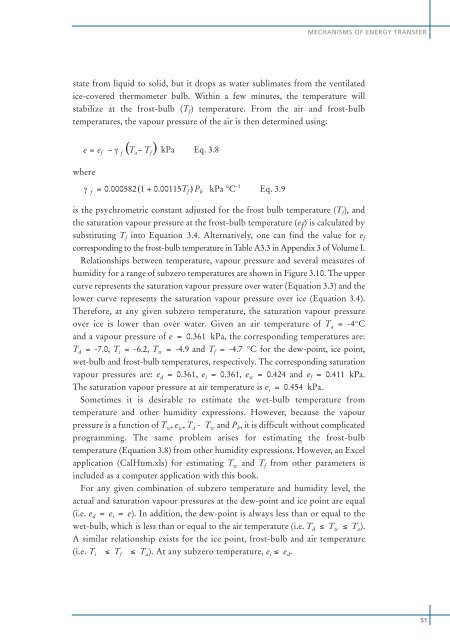
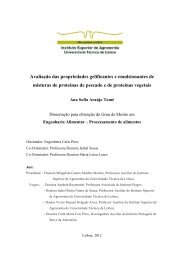
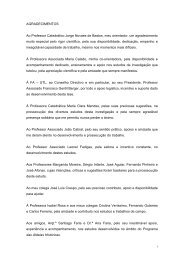
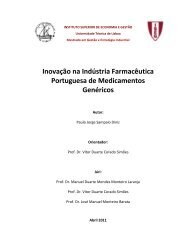
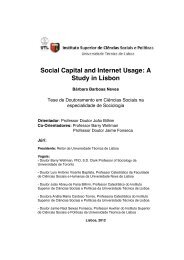
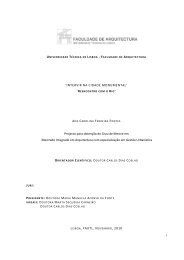
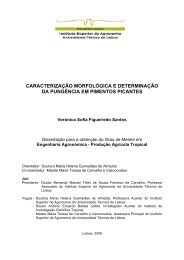

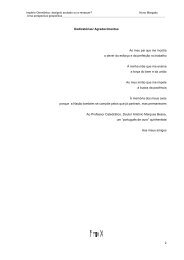
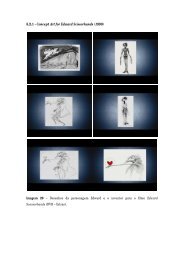
![Tese - Es..[1].pdf - UTL Repository - Universidade Técnica de Lisboa](https://img.yumpu.com/25707135/1/184x260/tese-es1pdf-utl-repository-universidade-taccnica-de-lisboa.jpg?quality=85)


